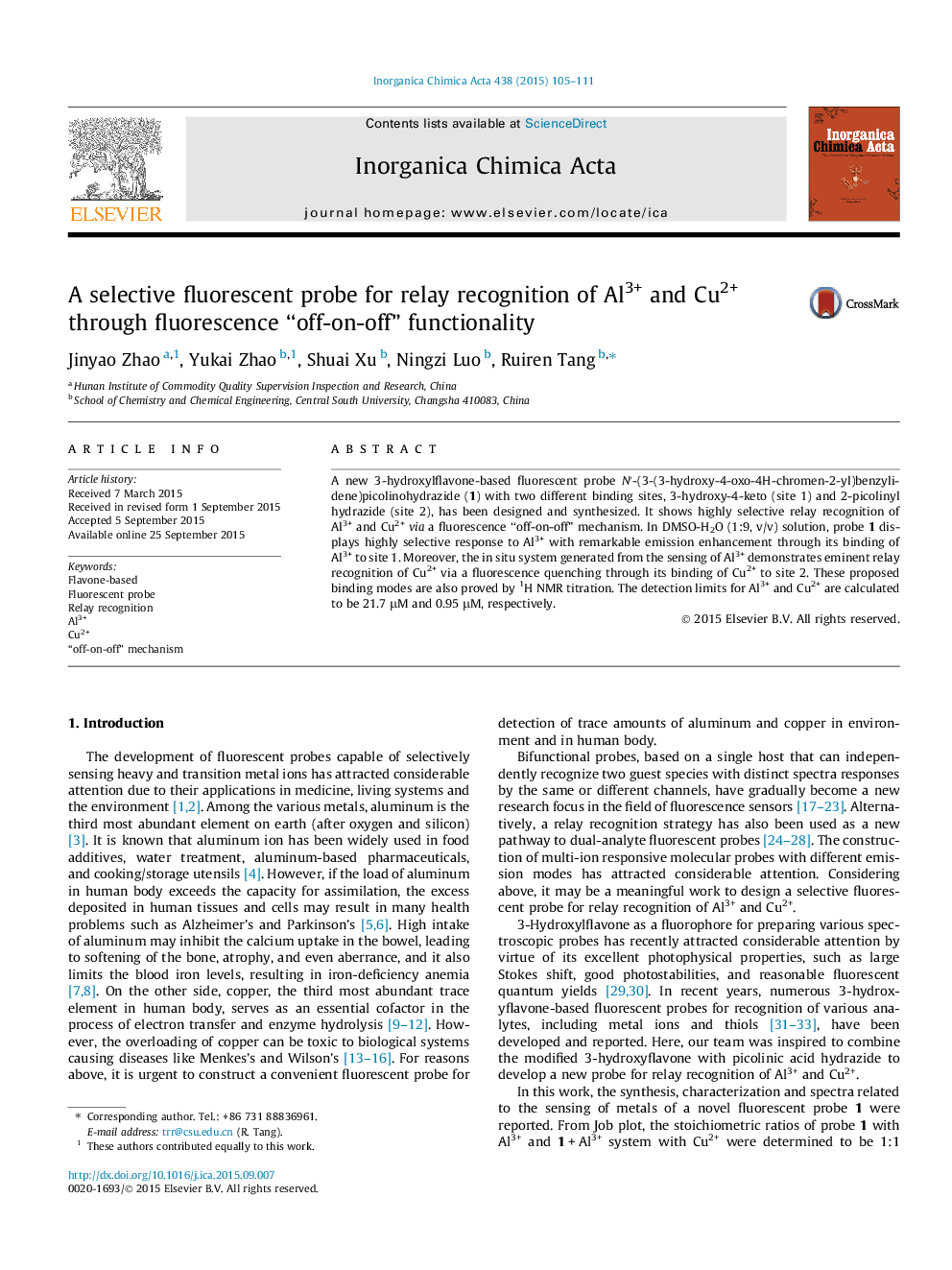| Article ID | Journal | Published Year | Pages | File Type |
|---|---|---|---|---|
| 1308679 | Inorganica Chimica Acta | 2015 | 7 Pages |
•A new 3-hydroxylflavone-based fluorescent probe 1 was designed and synthesized.•Probe 1 could selectively detect Al3+ with remarkable emission enhancement.•The in situ generated 1 + Al3+ system demonstrated relay recognition capability for Cu2+.•The relay recognition of Al3+ and Cu2+ has been realized with sequence specificity for the first time.
A new 3-hydroxylflavone-based fluorescent probe N′-(3-(3-hydroxy-4-oxo-4H-chromen-2-yl)benzylidene)picolinohydrazide (1) with two different binding sites, 3-hydroxy-4-keto (site 1) and 2-picolinyl hydrazide (site 2), has been designed and synthesized. It shows highly selective relay recognition of Al3+ and Cu2+via a fluorescence “off-on-off” mechanism. In DMSO-H2O (1:9, v/v) solution, probe 1 displays highly selective response to Al3+ with remarkable emission enhancement through its binding of Al3+ to site 1. Moreover, the in situ system generated from the sensing of Al3+ demonstrates eminent relay recognition of Cu2+ via a fluorescence quenching through its binding of Cu2+ to site 2. These proposed binding modes are also proved by 1H NMR titration. The detection limits for Al3+ and Cu2+ are calculated to be 21.7 μM and 0.95 μM, respectively.
Graphical abstractA novel 3-hydroxylflavone-based fluorescent probe with two different binding sites was designed and synthesized for relay recognition of Al3+ and Cu2+via a fluorescence “off-on-off” mechanism in DMSO-H2O (1:9, v/v) solution. The detection limits for Al3+ and Cu2+ are calculated to be 21.7 μM and 0.95 μM, respectively.Figure optionsDownload full-size imageDownload as PowerPoint slide
